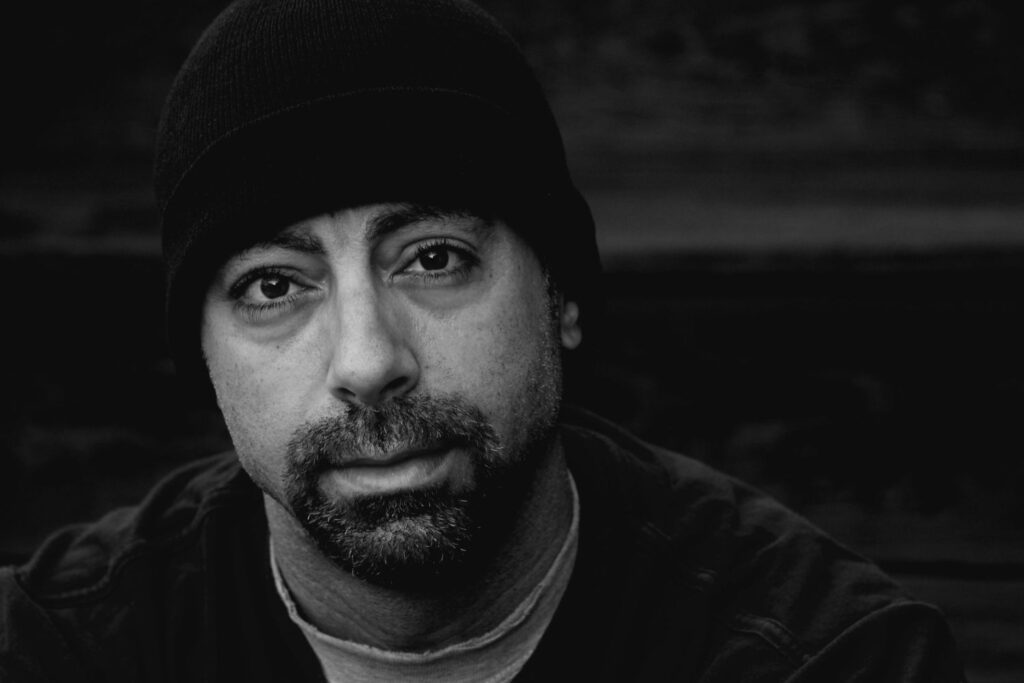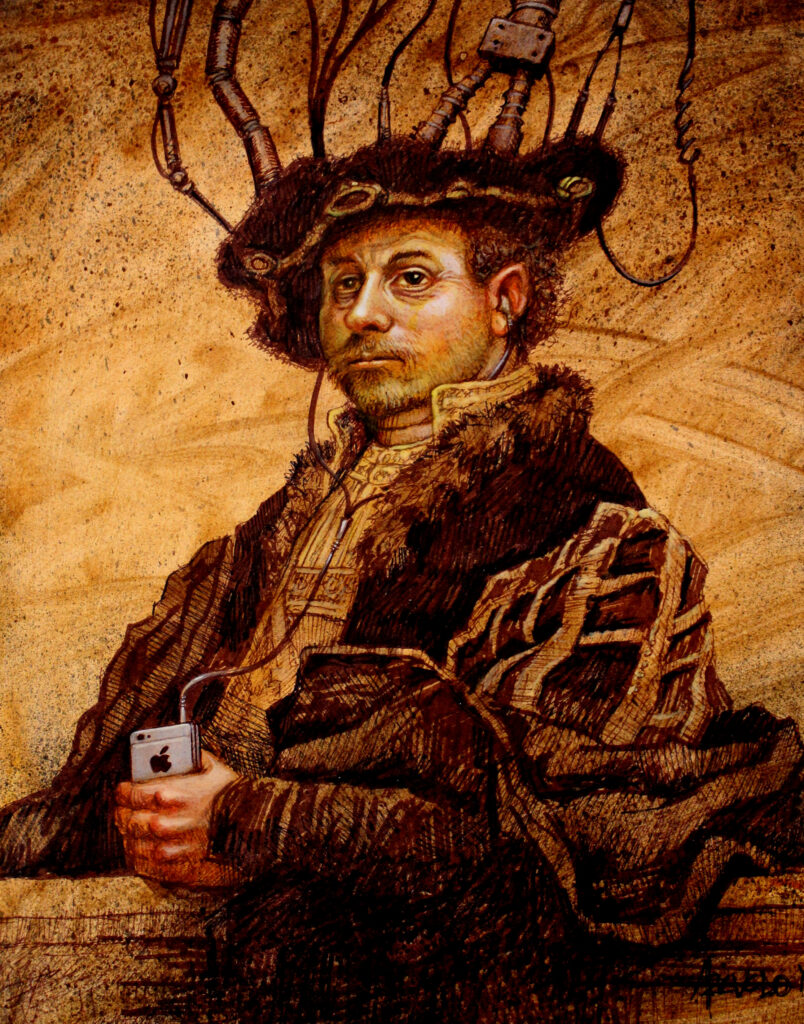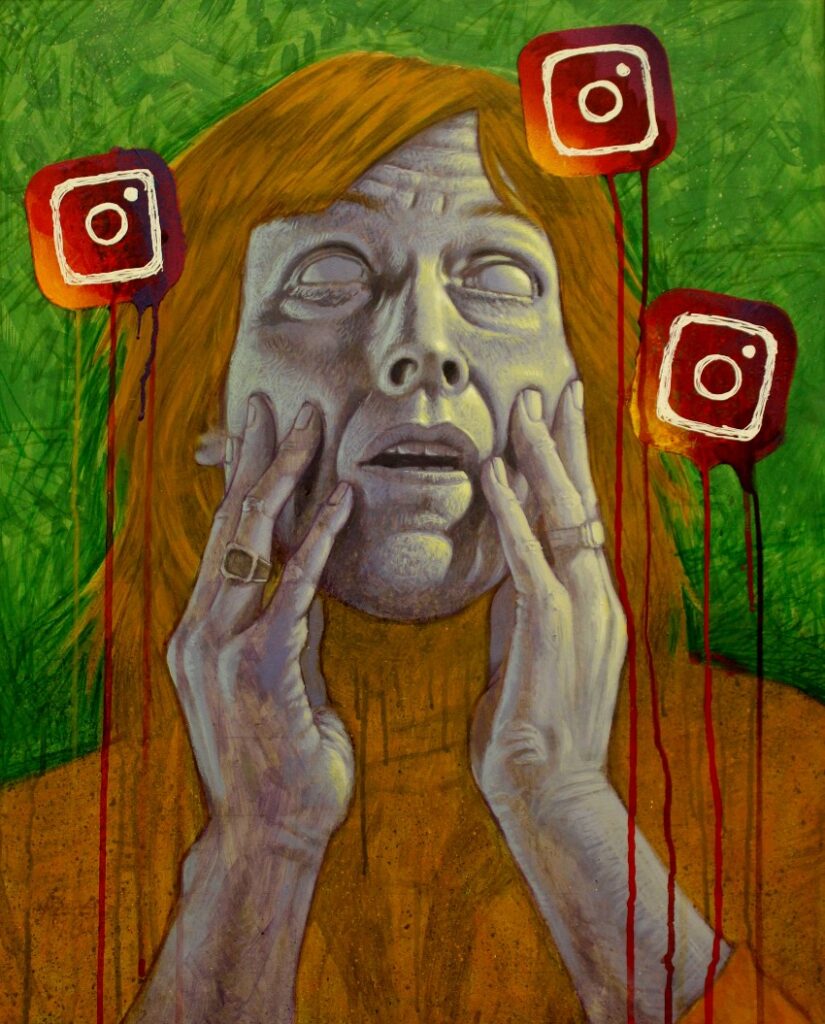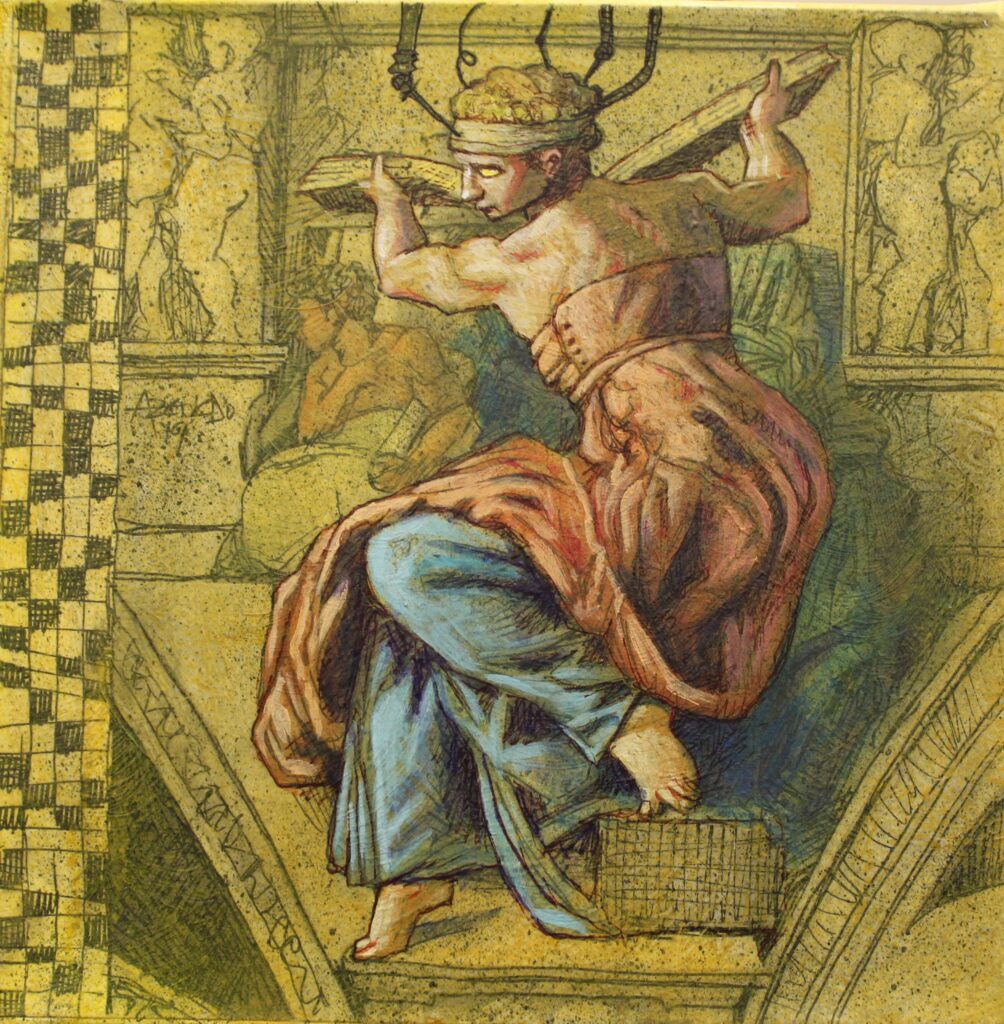





Lino Azevedo was born to Portuguese immigrants near San Francisco. Like most small children, he enjoyed creating from the soul with simple tools like pencil and crayon. Being a painter herself, his mother saw the potential and let him try his hand with her oils and brushes. These formative years set him up for a life-long career in the arts. He currently is a Foundations Professor at Savannah College of Art and Design. Lino is an award-winning artist whose work has been exhibited internationally and published in multiple journals and magazines.
John John O’Connor: You mentioned that your parents are from Sāo Jorge then moved to Portugal, how big of an influence were they for you as an artist? Especially since your mother was an oil painter as you were growing up.
Lino Azevedo: My father was always doing something around the house and was very handy (and still is!) He even freelanced and built cabinets between jobs for a while. My brother and I would help him in the wood shop from time to time and he even built an attachment to the garage and a small bar-b-que house in the backyard. Besides carpentry, he knew the basics of laying down concrete and put in our entire driveway when we moved into the house that he still resides in. This “hands on” approach to learning really influenced me when I finally started to take drawing and painting seriously.
As a way to save money, but also as a creative outlet, my mother made her own clothes. She knew how to sew very well and had a room in the basement with an antique sewing machine. That is also the room that she would do her oil painting. My parents usually worked opposite shifts at their jobs when we were young. For a while, my Dad worked nights so my Mom would keep us busy after dinner by having us paint on cheap canvas boards. I remember being confused by how hard it was to control the medium but also intrigued by the creative possibilities.
Like many immigrants, both parents believed in hard work and making opportunities, not waiting for things to happen.
JO: You have received a bachelor’s degree from San Jose State University and a master’s degree from Winthrop University for art. Can you tell me how your studies progressed your development as an artist. Would you say university is a necessary step for an amateur artist?
LA: Ah, yes! The big question of whether artists should, or should not go to art school…
It really depends on the person. For me, the answer is “yes”. I enjoy the classroom setting and I learn better in that environment. I feel that the assignment deadlines and the friendly competition with classmates really helped with my development as a creative. As a matter of fact, I feel I’ve learned just as much, if not more, from classmates than the professor. In turn, I tell my own students that they are in the classroom to learn from each other as well as from me. My undergrad studies at SJSU really helped me acquire the technical skills I needed and then my graduate education at Winthrop was more about self-expression and experimentation.
JO: You have traveled all around – growing up in California, backpacking across Europe, moving to New York, Charlotte, etc. How much have your surroundings and the places you’ve lived influenced your art?
LA: The places I’ve been have very, very much effected my work.
Traveling through Europe really opened my eyes to the history of art. It’s one thing to see the work in an art history book, but a totally different experience to see Michaelangelo’s Sistine Chapel by looking up at it and realizing it was finished centuries before the United States was even a thing.
Of course, moving to NYC was a tradition for many creatives. Actually, it was more of a necessity. The city was really the art capital of the world for decades. It had the best galleries and museums in the world as well as all the major publishing companies. Another aspect of the city is how difficult it is just to survive there. You know what they say, “if you can make it in New York…”
I think that living for lengthy periods of time in both “blue states” and “red states” has really helped me acquire a more open minded perception of people’s views. Understanding is knowledge, and knowledge is power!
JO: A lot of your art involves pieces having to do with social commentary. As for your messages in these works, are they messages that you think about for a while as you build up an idea? Or are they something you see and feel a need to respond?
LA: I would say both.
I’m very affected psychologically by many of the injustices and atrocities going on in the world. Sitting down and sketching out ideas is almost automatic after reading about or viewing these stories on the news. These events definitely have an immediate impact on much of my work.
Often, however, there will be something that develops slowly and may take months to actually evolve into anything finished. As a matter of fact, it may even change meaning or have a very “vague” meaning. Often, the “feeling” of the image is more what I’m after than an obvious statement. This is my favorite way to start a conversation.
JO: One of the largest and most complete works you have done was your series on lobotomies. How did the idea for this come to fruition and what was the original message you were trying to send? Also what do you think the importance is of using unsettling imagery in art?
LA: In this case, lobotomy, or lobotomized, is about society either being manipulated by the certain entities or choosing to be ignorant of these possibilities.
Actually, the idea for the Lobotomy series was only a concept for one painting. I had an idea for a half dead old guy with a stitched up circle on his head from the removal of part of his brain. I loved how it started to come out while working on it and then sketched out other “foreheads”. Some of these symbols included known logos from big companies. I kept going with these different portraits, eventually creating a series.
Using “unsettling imagery” is sometimes necessary. Like the John Doe character from the Seven movie stated, “It’s not enough to just tap people on the shoulder anymore…you have to hit them over the head with a shovel.”
JO: You now teach art and work as a Foundations Professor at Savannah College of Art and Design in Savannah, Georgia. Can you tell me how being a teacher and working with students has changed your approach to art? Or if it has changed your style at all?
LA: Teaching Foundations classes, like the very first drawing classes that first year freshmen take, is something I take seriously. Many of the professors I had in college were taught by the Abstract Expressionists of the generation before. These professors lacked the skills or interest to teach the fundamentals of drawing, design, color theory, etc. I remember one guy would even sit in the corner and try to teach himself guitar while we worked on some unfocused assignment. Don’t get me wrong, self expression and “art for arts sake” is very important, but I want my students to be noticeably better at the basics of drawing when they leave my class versus when they started.
One of the best things about teaching a generation younger than me is the link to artists and styles that are currently in fashion instead of always going back to my old favorites. I feel like these students have opened doors for me and I have all these new toys to play with as far as influence and directions.
- An Interview with Lino Azevedo - January 12, 2024